TAGGED AS: Amazon Studios, Fantasy, Prime Video, television, TV

(Photo by Matt Grace/Prime Video)
After a number of episodes setting up the state of play in Middle-earth’s Second Age, the sixth episode of The Lord of the Rings: The Rings of Power, “Udûn” (“hell” in Sindarin Elvish), came out swinging with an action-filled installment that may present some echoes of its feature film cousins’ great battles, but also presents some new sides of its own developing narrative.
Can a prequel series purposely echo ideas to make different points or cast those moments as substantially different? Let’s take a look at the explosive hour, which is currently 100% on the Tomatometer, and find out.
Spoiler Alert: The following reveals details of the plot of episode 6 of The Lord of the Rings: The Rings of Power, “Udûn.” If you haven’t watched the episode and want to avoid spoilers, stop reading here.
The episode 6 battle, with its ebb, flow, and countermoves, will undoubtedly be compared to the Battle of Helm’s Deep as depicted in either The Two Towers film or novel. In each case, the presumed protagonists face a force of Orcs (er, Uruks) greater than themselves. Although, in the case of the band Arondir (Ishmael Cruz Cordova) and Bronwyn (Nazanin Boniadi) lead, there are far fewer soldiers in their midst when compared to the number of trained men in Theoden King’s (Bernard Hill in the Rings film series) army. Nevertheless, the comparison is there, right down to Ostirith’s resemblance to the Helm’s Deep stronghold known as the Hornburg.
We believe the choice to evoke that particular battle’s scope (if on a more limited canvass here in Rings of Power) and stakes to be absolutely intentional on the part of the show’s creators, which is why it came as a great relief that Ostirith itself is used as a diversion instead of a refuge. It is, in its way, a signal to the audience that choices are being made with knowledge and forethought. And, eventually, to make a counterpoint as the peoples of the West ultimately lose the battle with fire and smoke on the horizon instead of Ents and Huorns.

(Photo by Prime Video)
That said, Arondir’s decision to bring the tower down on the Orcs (and the Men now loyal to their leader) might not have been the most tactically wise choice, but as we’ll eventually see, the tactics of this particular battle are often a tool for Adar (Joseph Mawle) to further his plan.
Also worth noting: Adar seemed to anticipate all the ways Arondir and, eventually, Galadriel (Morfydd Clark) will fight against him. While some still debate a given palantir’s ability to see the future, is it possible he had some aid in accurately predicting how his foes would mount their defenses and attacks? Or is he just that good of a military commander?
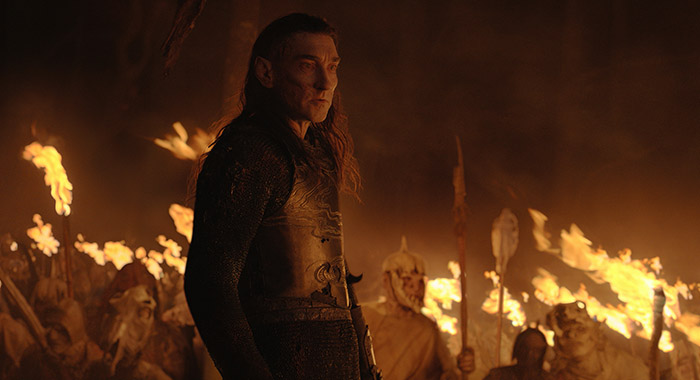
(Photo by Prime Video)
And while on the subject of Adar, it is interesting that Galadriel immediately surmises that he is not only one of the first Orcs, but of the Moriquendi (although she uses a slightly different word which still means the same thing) — a broad term for the “dark” Elves who stayed in Middle-earth when they were called to Valinor and never saw the light of the Two Trees. The Moriquendi are not inherently evil — their “darkness” relates only to the light of the Undying Lands — but it is from their lot that Morgoth eventually birthed the Orcs.
So, it makes perfect sense that hundreds of years after the Dark Lord’s defeat one of the corrupted Moriquendi would emerge looking to give his Uruks a homeland. We have to admit, Adar’s explanation to Galadriel sounds like a fair enough thing. No matter their origin, the Uruks are a true race of Middle-earth and likely deserve a homeland of their own. Their manner of going about it is incorrect, of course, but it is interesting to see this notion of Orc sovereignty suggested at all. Adar’s story could all be another song of lies, however. He was a servant of the Enemy, after all, and could be packing this story with ideas that might appeal to Galadriel. Of course, he seemingly had no knowledge of her desire for revenge, so it all might have been futile. Then again, their encounter left him in a spot of relative safety for the ultimate part of his plan.
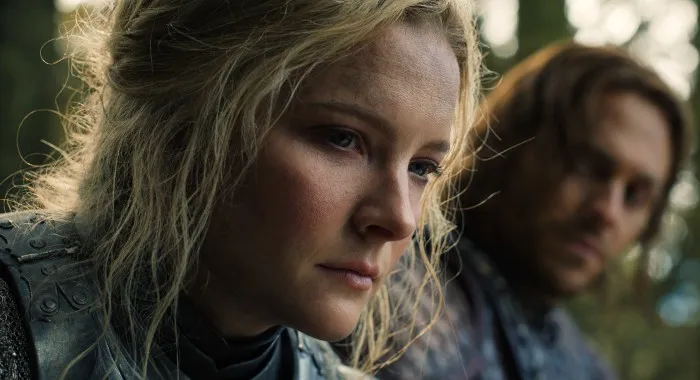
(Photo by Prime Video)
Going back to their opening moments of their conversation in the barn, though, it is interesting that Galadriel identifies him as just one of the Moriquendi and not a specific character. Some online suggest the character could be Eol — a rather notorious Elf of the First Age who was literally known as the Dark Elf and was thrown from a cliff for his misdeeds — or his son Maeglin, whose presumed final moments track with the scars on Adar’s face. But then again, the show may not have access to that particular story, so we may only ever get the suggestion that Adar is, perhaps, Maeglin.
All that said, there is an appeal to Adar being a newly devised character for the show. As another survivor of the First Age, he can offer a unique perspective on events — like his claim of besting Sauron.

(Photo by Prime Video)
Presuming everything Adar said is not just an elaborate fiction of Sauron’s to keep suspicious eyes from spotting him too quickly, the Orc-father’s tale of defeating Sauron still leaves a few clues about his whereabouts to examine. So let’s go straight to the seeming prime suspect: Halbrand (Charlie Vickers).
Just as he, Galadriel, and the Númenórean force comes to the village’s aid, Adar flees (itself a ruse to deflect attention from the hilt). He is eventually caught by Halbrand and Galadriel, with the former asking the dark elf if he remembers who he is. The moment is very pointed even if Adar claims both ignorance and an eventual dim memory of hurting someone Halbrand cared about. Halbrand is on the verge of killing Adar, but is held back by Galadriel’s choice words.
Admittedly, that restraint more than anything disqualifies Halbrand from being one of Sauron’s clever lies and disguises, but it still could be part of an elaborate scheme on his part to determine both Galadriel’s convictions and the strength of Númenór. Nevertheless, Halbrand’s action in the moment — and Adar’s reaction to him — still leaves some doubt in our minds as to whether or not Halbrand is truly a Man. If Adar really did wound Sauron, Halbrand’s “remember me” could read as the Dark Lord anticipating his vengeance.
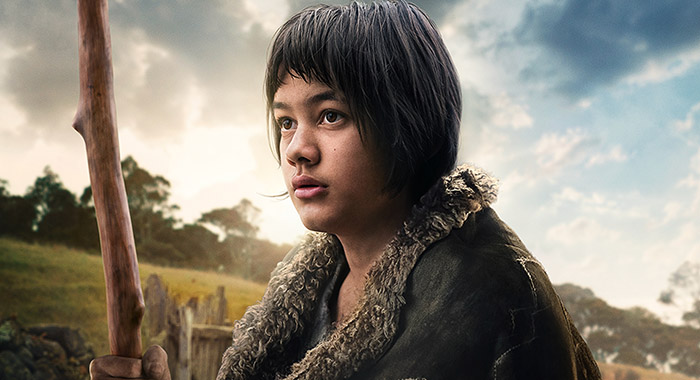
(Photo by Prime Video)
And while we never suspected Theo (Tyroe Muhafidin) of being Sauron, his actions in this episode completely disqualify him. Besides staying true to the people in Tirharad, the terror he faces in both battling the Orcs and aiding Arondir in saving his mother after she is hurt definitely places him among Men. That said, he could still be turned into one of the Nazgûl, eventually.
He likely shares that fate with Halbrand. Presuming none of these characters are Sauron, Bronwyn’s quick acceptance of Halbrand as king opens up the possibility that he may be one of the nine rulers of Men Sauron ultimately gifts with a Ring of Power. And considering all the work the show has done casting him as a precursor Aragorn, it may all be leading to a new history for the Witch-King of Angmar, the chief of the Nine.
And, as we often disclaimer when discussing Sauron’s possible disguises, hiding as a damaged Elf or cowering Man may be too wounding to Sauron’s pride for him to actually follow through on such a ruse.
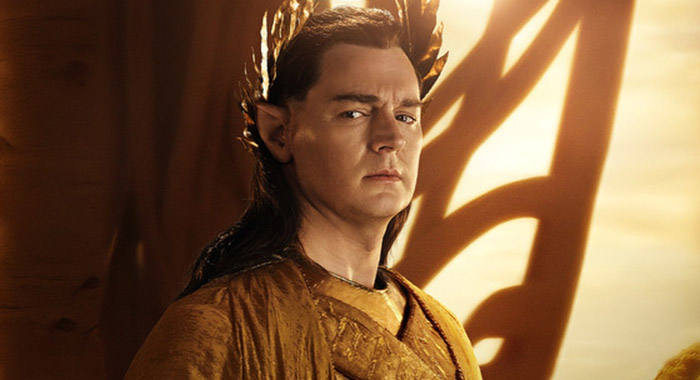
(Photo by Prime Video)
That brings us back to Lindon and one thing we want to mention about the previous episode: the seeming origin story of Mithril. As recounted by Elrond (Robert Aramayo) and High King Gil-Galad (Benjamin Walker), the ore’s light is derived directly from a Silmaril fought over by the purest of Elves and the darkest of Balrogs.
The story is a completely fabrication of the television series and it sparked a lot of debate online about the show’s attempt to give Mithril an origin tied to the War of the Jewels. We’re taking a different position. The tale — said to be obscure by Elrond — is a helpful myth to the Elves and their aims.
As it happens, a lot of the stories told by one character to another in the series so far have been fairly self-serving. The Harfoot’s claim that no one gets left behind was seemingly shattered when Malva (Thusitha Jayasundera) begged for the Brandyfoots to lose their cart wheels. The story Durin (Owain Arthur) told Disa (Sophia Nomvete) about his first meeting with Elrond also had certain embellishments, and Durin’s claim to the table he found in Lindon was a total lie. Why should an obscure myth about an Elf and a Balrog fighting high above the Misty Mountains be any different?
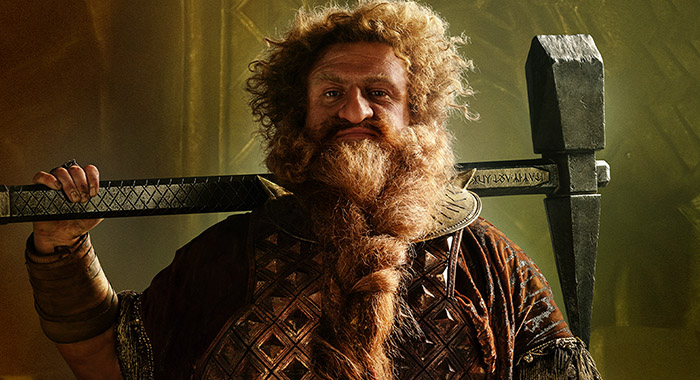
(Photo by Prime Video)
Going again to Tolkien’s lore, the War between the Elves and Morgoth rarely passed further east than where Lindon would eventually be founded. Also, what became of the three Silmarils is more or less known. One resides with Elrond’s father, Eärendil, in the night’s sky, one was lost in the sea, and the third awaits somewhere in the fiery depths beneath Middle-earth. And at no point did they ever come to be as far east as the Misty Mountains, then part of the completely untamed wilds of Middle-earth. But it certainly benefits the Elves to embrace the story as it gives them claim to the mineral Durin discovered.
It also benefits a certain someone to put this story into Gil-Galad’s thoughts. That person might also benefit from poisoning the great tree in Lindon and convincing the Elves they will diminish into nothing by the spring. And that same someone also benefits from his seemingly former servant carrying out another plan far to the south and east of Lindon.
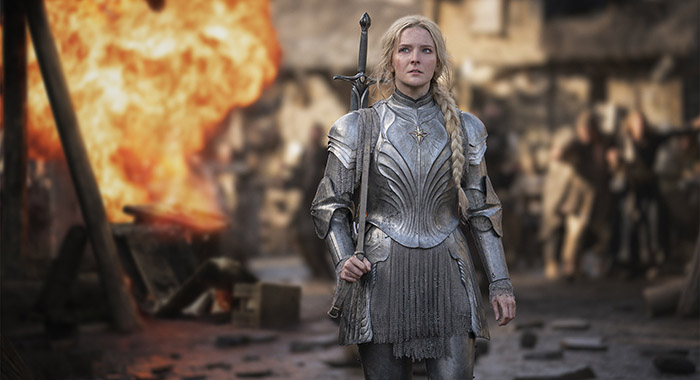
(Photo by Ben Rothstein/Prime Video)
As it turns out, Adar’s plan to remove the sun from the Southlands required igniting Orodruin. The mountain, not yet known as Mount Doom, was seemingly benign throughout the First Age and, presumably, much of the millennia prior to that. Bronwyn mentioned it was fairly close in a previous episode and, as revealed here, the true purpose of the Orc tunnels and their interest in the hilt Theo found. As Arondir suggested, it was a key made to unlock the waters near Ostirith and birth a volcano.
Taking Adar at his word, completing this plan is an act of benevolence. Well, for the Uruks, anyway. And his story about gutting Sauron in the northern wastes — after his many brutal attempts to reach the Unseen World — would certainly suggest they are at odds, but recall that the stories told to other characters in this series have been self-serving so far.
Ostirith was ultimately older than its use as an Elf settlement and the mechanisms required to dam that water and release it were built by peoples loyal to the Enemy sometime in the First Age. If creating a place in Middle-earth free of the sun’s harmful effects on Orcs was not part of Sauron’s grand design for the region, why would he and his faithful leave a literal map to the area for other creatures of evil to find?
Whether or not he means to, Adar is still in Sauron’s service. And that wrinkle is as explosive as Mount Doom’s first eruption since the Years of the Trees (if not earlier). And like the damage the volcano caused in the episode’s final moments, the shock will be felt for an age to come.
![]() 84%
The Lord of the Rings: The Rings of Power: Season 1
(2022)
streams new episodes every Friday on Prime Video.
84%
The Lord of the Rings: The Rings of Power: Season 1
(2022)
streams new episodes every Friday on Prime Video.